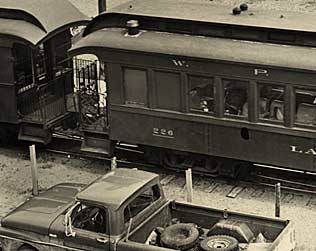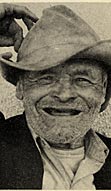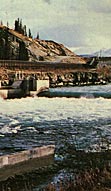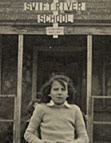Booms and busts: Whitehorse and Dawson City
The pressures of war, combined with the number of troops, construction workers, and equipment created a situation comparable to the gold rush in its effect on the Yukon, especially in Whitehorse. Prior to the spring of 1942 the population of Whitehorse was approximately 400. In the space of a few months it had risen to 20,000, and some people estimate that it peaked at over 40,000 in 1943. When the Army came to town municipal services, including water and sewer, garbage disposal, and electricity supply were in a rudimentary state, and the influx created an emergency situation. An appeal to the territorial government to allocate more funds to Whitehorse to develop better services was denied.
This photograph in Carcross, Yukon shows all forms of transportation linking this community with the "outside", with the exception of the airplane. (view more details)

Many Yukoners perceived the American troops to be an "army of invasion". Local needs became less of a priority and local businesses found it difficult to obtain supplies normally received via the White Pass and Yukon Route railway. The railway had been temporarily leased by the U.S. Army and it was said that supplies bound for Whitehorse and Dawson City during the winter of 1943 were held up on the docks at Skagway, bumped by more important military supplies.
On the other hand, there were people, especially in Whitehorse, who saw the highway as beneficial to maintaining a stable economy in the Yukon. The road broke the White Pass shipping monopoly, encouraged the building of a network of connecting roads to help the mining industry, and attracted a flow of tourists to the area. In spite of periods of boom and bust the permanent population of Whitehorse has continued to grow since the highway’s construction, as the town retained its wartime status as administrative and transportation centre of the territory.
colourful 5% (view more details)

The power dam at Whitehorse (view more details)

Whitehorse’s new status came at the expense of the one-time Yukon capital, Dawson City, which was bypassed when the Army chose a route for the highway in 1942. In 1953, The Yukon’s capital was moved to Whitehorse. This was a blow to Dawson City’s economy as jobs, people and money relocated to the new capital. Dawson City’s slump was curtailed with post-war road development: the town was eventually connected with the rest of the Yukon and tourists were drawn to its gold rush history.


